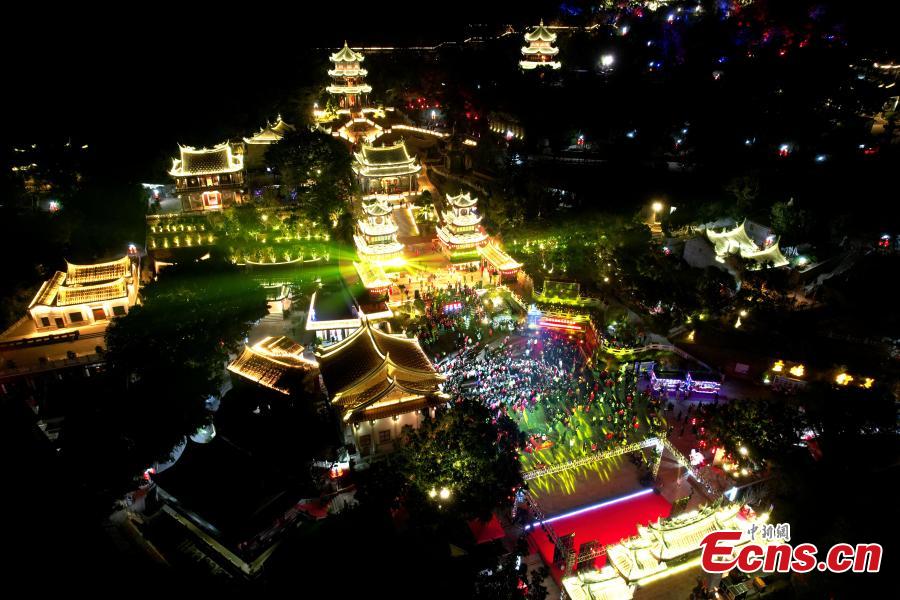
The night view of the Mazu Ancestral Temple on the Meizhou Island, Putian, east China's Fujian Province, Jan. 3, 2022. (Photo: China News Service/Wang Dongming)
The temple is the origin place of Mazu (China's sea goddess) culture where pilgrimages worship the sea goddess here.
The current temple complex was mainly built in the Qing Dynasty (1644-1911). The over-40-meter high complex is consisted of ancestral halls, mountain gates and other affiliated architectures.
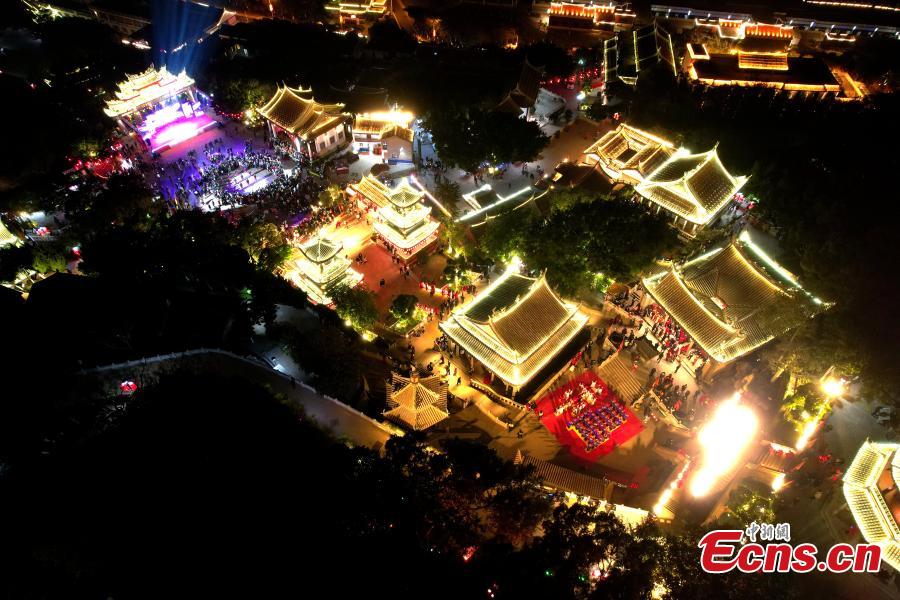
The night view of the Mazu Ancestral Temple on the Meizhou Island, Putian, east China's Fujian Province, Jan. 3, 2022. (Photo: China News Service/Wang Dongming)
The temple is the origin place of Mazu (China's sea goddess) culture where pilgrimages worship the sea goddess here.
The current temple complex was mainly built in the Qing Dynasty (1644-1911). The over-40-meter high complex is consisted of ancestral halls, mountain gates and other affiliated architectures.
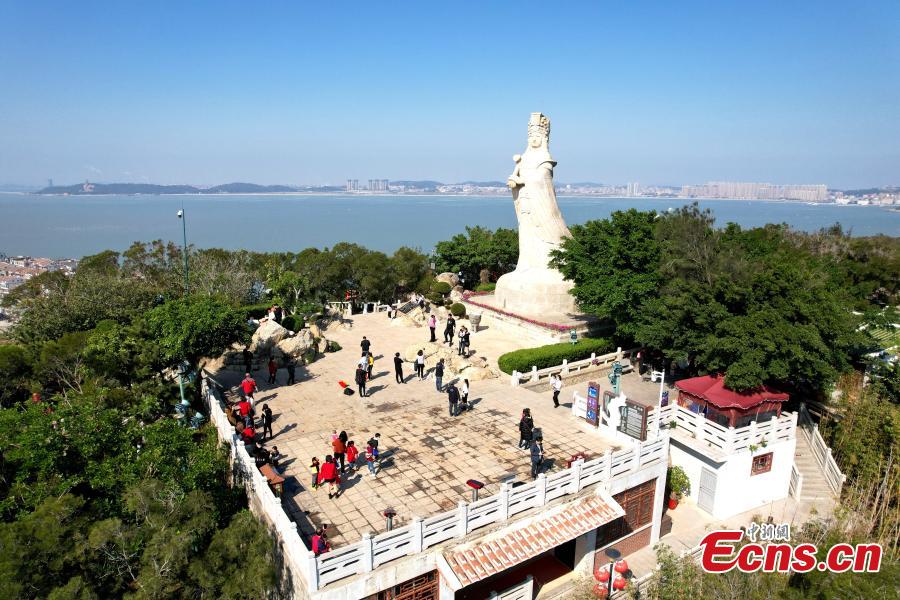
Aerial photo of a 14-meter high Mazu (China's sea goddess) statute erected on a mountain of the Meizhou Island, Putian, east China's Fujian Province, Jan. 3, 2022. (Photo: China News Service/Wang Dongming)
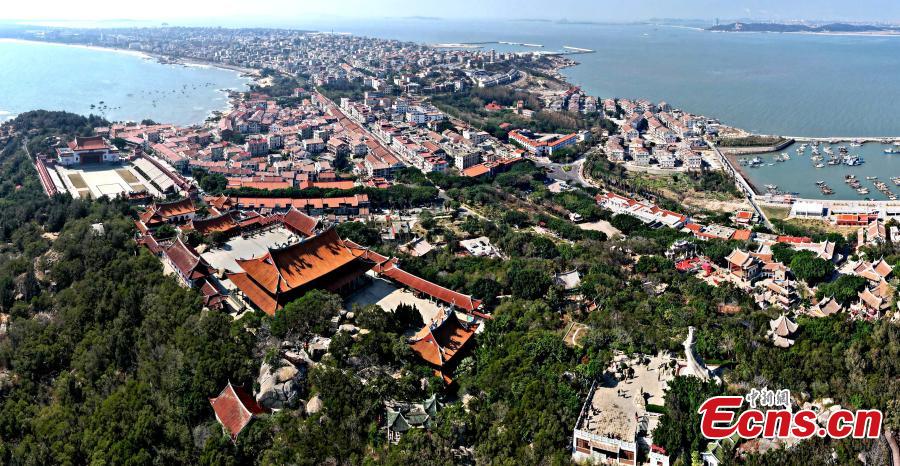
Aerial photo of the Mazu Ancestral Temple complex on the Meizhou Island, Putian, east China's Fujian Province, Jan. 3, 2022. (Photo: China News Service/Wang Dongming)
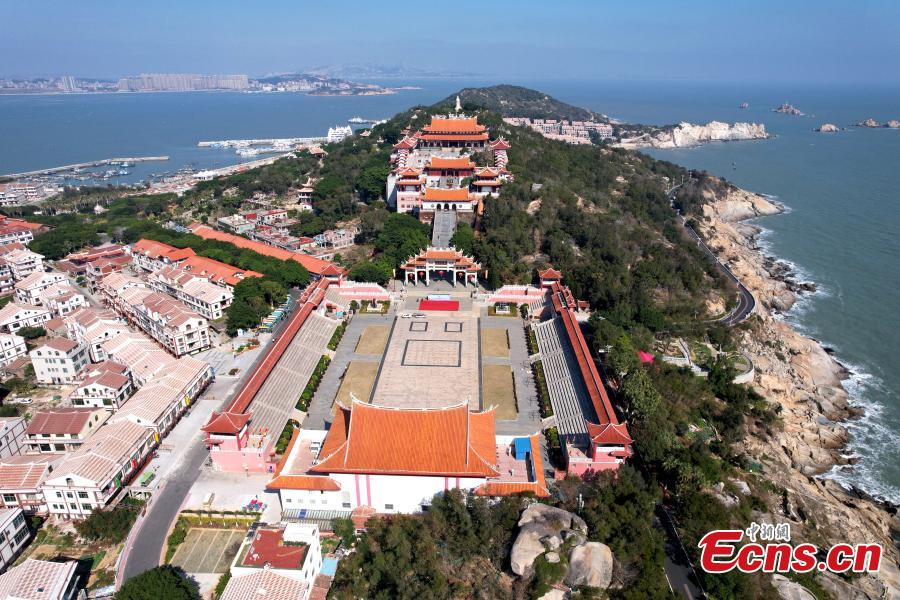
Aerial photo of the Mazu Ancestral Temple complex on the Meizhou Island, Putian, east China's Fujian Province, Jan. 3, 2022. (Photo: China News Service/Wang Dongming)

Aerial photo of the Mazu Ancestral Temple complex built on the hillside and by the sea at Meizhou Island, Putian, east China's Fujian Province, Jan. 3, 2022. (Photo: China News Service/Wang Dongming)









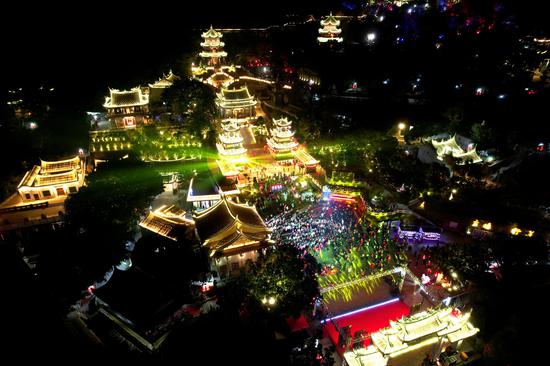











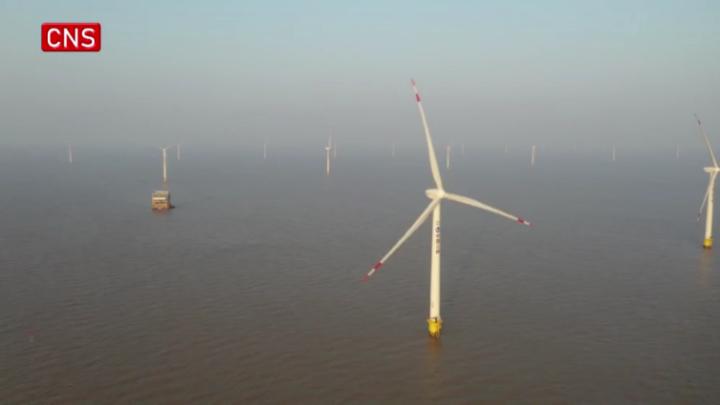

 京公网安备 11010202009201号
京公网安备 11010202009201号